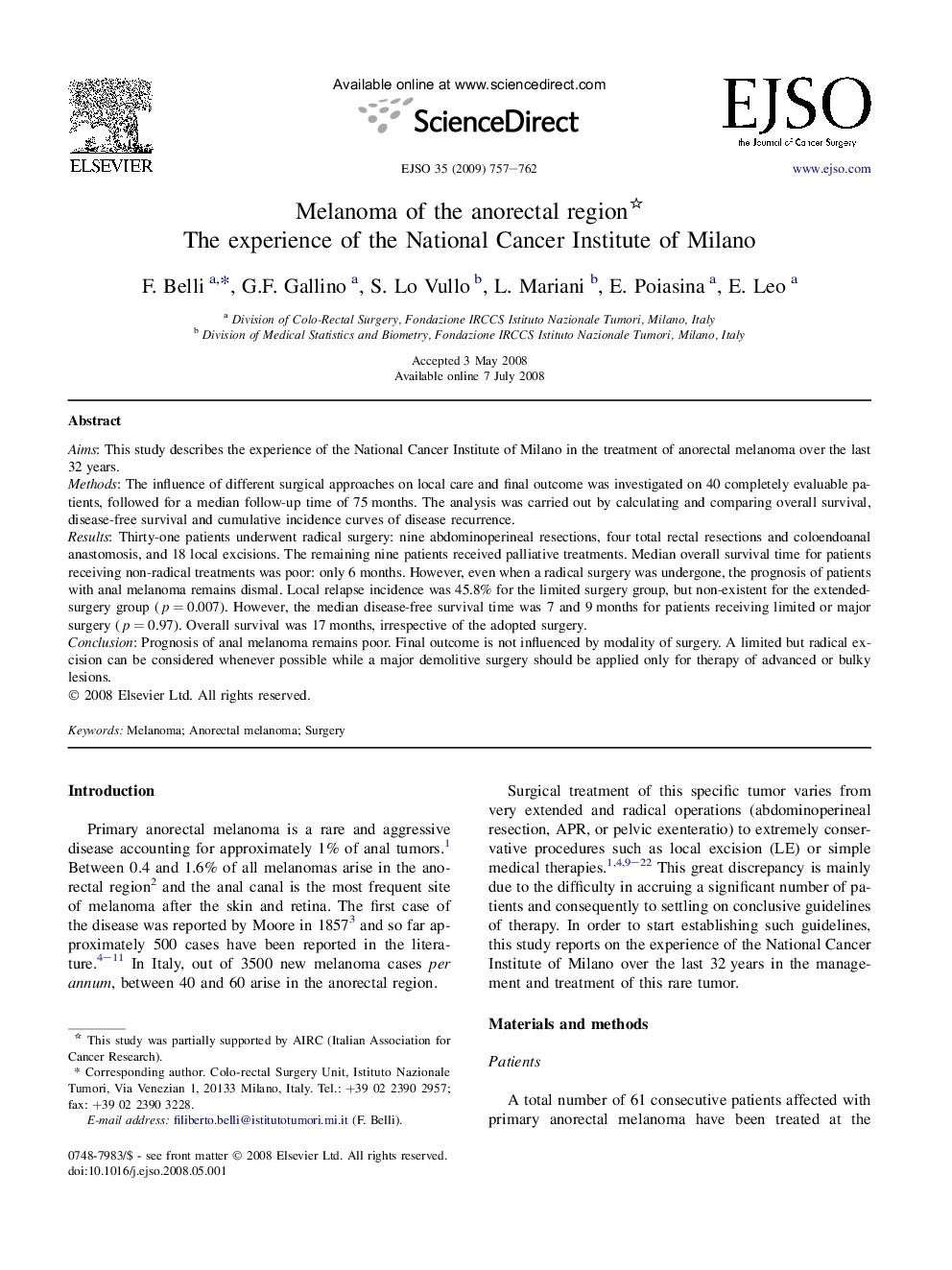| Article ID | Journal | Published Year | Pages | File Type |
|---|---|---|---|---|
| 3986840 | European Journal of Surgical Oncology (EJSO) | 2009 | 6 Pages |
AimsThis study describes the experience of the National Cancer Institute of Milano in the treatment of anorectal melanoma over the last 32 years.MethodsThe influence of different surgical approaches on local care and final outcome was investigated on 40 completely evaluable patients, followed for a median follow-up time of 75 months. The analysis was carried out by calculating and comparing overall survival, disease-free survival and cumulative incidence curves of disease recurrence.ResultsThirty-one patients underwent radical surgery: nine abdominoperineal resections, four total rectal resections and coloendoanal anastomosis, and 18 local excisions. The remaining nine patients received palliative treatments. Median overall survival time for patients receiving non-radical treatments was poor: only 6 months. However, even when a radical surgery was undergone, the prognosis of patients with anal melanoma remains dismal. Local relapse incidence was 45.8% for the limited surgery group, but non-existent for the extended-surgery group (p = 0.007). However, the median disease-free survival time was 7 and 9 months for patients receiving limited or major surgery (p = 0.97). Overall survival was 17 months, irrespective of the adopted surgery.ConclusionPrognosis of anal melanoma remains poor. Final outcome is not influenced by modality of surgery. A limited but radical excision can be considered whenever possible while a major demolitive surgery should be applied only for therapy of advanced or bulky lesions.
